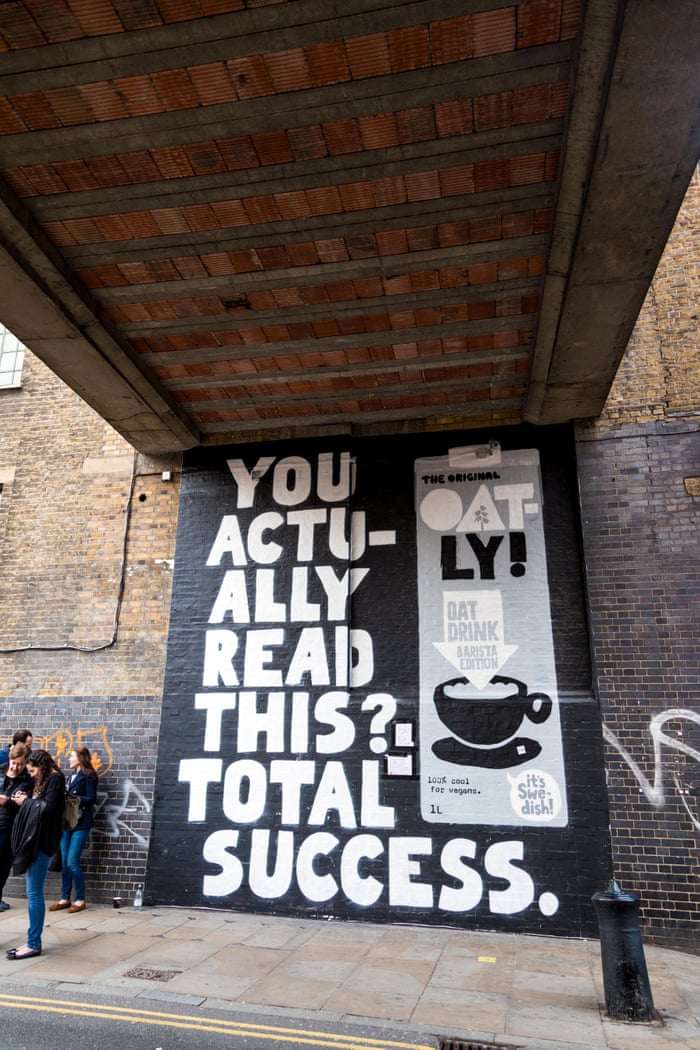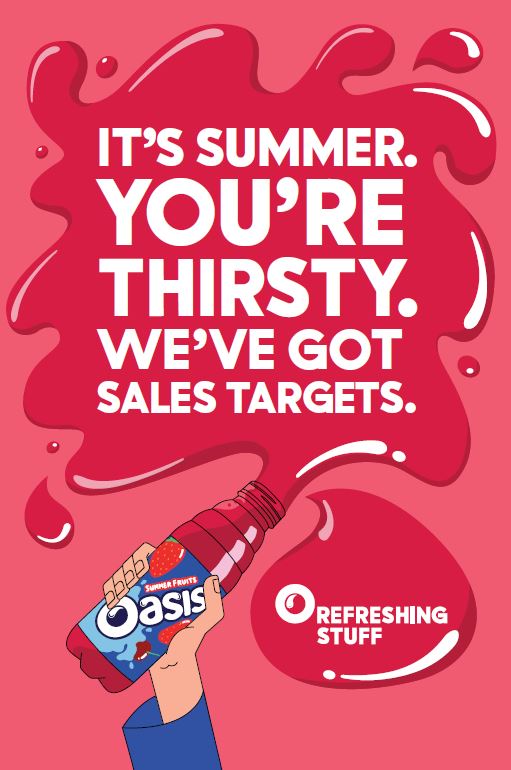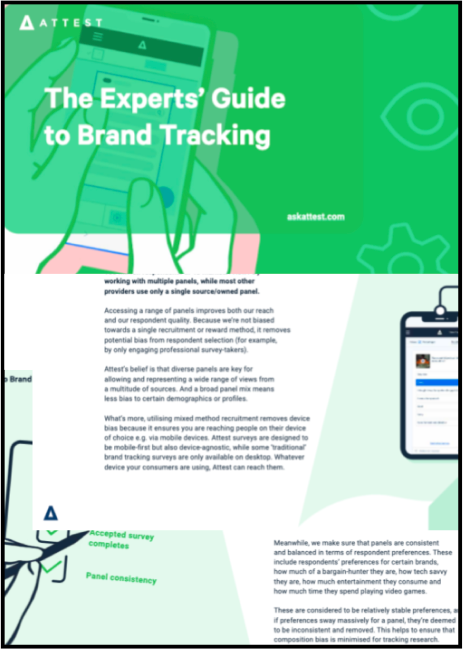Oatly, Brewdog, Oasis: do their anti-advertising campaigns work?

“Here’s a product, we want you to buy it”. That’s the subtle message of most – if not all – adverts. How they encourage you to buy varies, though. Some warm your heart, some provoke thoughts, some just come out and tell you to buy. It’s this last category that has caught on in recent years, adverts that tell you what they’re doing; they’re trying to take your money.
BrewDog, Oatly and Oasis are all major brands leading the charge on the anti-advertising trend. Earlier this year, BrewDog called their new TV campaign “the most honest ad you’ll ever see”. Honesty is – supposedly – the crux of it. Consumers are losing trust in brands, and brands are regaining favour by being honest with people. They do this by referring to the fact that they are advertising within the campaign creative – referencing the medium, the goal (sales, most often) or, even, just filling a 30-second TV slot with the word “ADVERT”.
According to Appnova, the anti-advertising trend is characterised by a focus on surprise over noise, attraction rather than promotion, and reverse psychology. These ads are meant to stand out in a world where authenticity is increasingly crucial and where every single market is busier than ever.
The aim for anti-adverts, then, is to be unique, a conversation starter at a dinner party, and to be remembered for months to come.
“It’s about cutting though the clutter by being adverts that don’t look like adverts” – More About Advertising.
But is the trend actually working for these brands? Do consumers think the adverts are unique, do they talk about them with friends and go on to buy the product? We asked a group of 250 UK consumers (aged 18 and above) in order to find out*.
*survey to a nationally representative sample of working age UK consumers.
Oatly
Oatly are one of many brands taking on the milk-industry, but their brand has taken the category by storm, leading them to consider opening a UK-based factory to meet the growing demand.
They’re known for their bold Out of Home (OOH) adverts, of which this is one example. Their ads usually reference the fact that billboards and branded murals are ignored by people passing by, how much cheaper OOHis than digital advertising, and sometimes call out the consumers they most want attention from, with copy like “We made this mural instead of an Instagram post. Hope a barista walks by and sees it.”.

We showed 250 consumers the advert pictured, here’s what they thought.
Most consumers were fond of this advert. It was given an average score of 3.3/5 (1 being low, and 5 high). It was also rated by most consumers as being “Clever” (40.2%) and “Unique” (39.8%).
While they may have been gently amused by the ad, they weren’t inspired to act. Only 16.1% of consumers were “Very likely” to tell their friends about it, and 52.8% said it would make no impact on their likelihood to buy Oatly. But there was only a very small portion of consumers for whom the advert had a negative impact on their likelihood to buy (5.2%).
The advert had a more positive impact on younger generations (aged under 40), with over half (50.4%) of those consumers feeling that – to some extent – they’re more likely to buy Oatly as a result of seeing it.
Oasis
Oasis are true champions of honesty. They’re candid about wanting to make the most money possible, and have been for years. Their “O Refreshing Stuff” campaign, which references sales targets and marketing strategies, kicked off back in 2015 and is still used today.

Consumers agree; most believe the advert is honest (41.2%), and it amused 34.8% of consumers .
Comedy might be one potential path to viral campaigns, too, with just under half (49.2%) of consumers agreeing that they were likely to share the advert with friends.
The honest campaign also has a positive impact on Purchase Intent. 16.4% of consumers claim to be much more likely to buy from the brand after seeing the ad, with a further 30% saying they’re at least slightly more likely to buy as a result.
Overall, the Oasis ad was more well-liked than Oatly’s. Perhaps their explicit reference to the goal of the ad – to increase sales – surprised consumers and tickled their funny bones more than Oatly’s attempt at honesty. The “O Refreshing Stuff” advert received an average of 3.5/5 from consumers.
BrewDog
Back in 2013, BrewDog’s founder said, “I would rather take my money and set fire to it” than spend it on advertising. Yet, 6 years later, the challenger beer brand purchased one of the most expensive TV ad slots, during an episode of Game of Thrones. And in it they showed an advert unlike any other. It had the shock-factor, for sure, but did it hit the right notes with consumers?
In a word, no. Most consumers (41.6%) find the advert annoying and 30.8% find it boring. It scores low for honesty, despite its attempt to be “the most honest ad you’ll ever see”, which may underlie the consistent poor scores for this advert, which misses the criteria for a successful anti-advert (poking fun at the sales targets it’s trying to induce, as one word can’t convey this).
It’s by far the least-well-liked advert of the three we tested, receiving an average score of 2.4/5, thanks to 34.4% of the population giving the advert 1/5.
It’s also the least likely to generate conversations, with the majority of consumers (33.6%) claiming they’re “Very unlikely” to talk about it with friends. A similarly large proportion (46.8%) of consumers said it would have no impact on their likelihood to buy BrewDog products, and only 7.6% said it would have a strong positive impact on their intent to purchase.
This advert was received more positively by male respondents, who gave it an average score of 2.7/5, compared to the female average for this advert which was just 2.1/5.
Conclusions
There’s clearly great variety in the style, and reception, of “honest” ads. While some brands employ a frank or tongue-in-cheek tone of voice that resonates and does well to drive up sales, other brands miss the mark with their anti-advertising. It’s a delicate balance.
All anti-adverts still have shock-factor, but as the trend becomes a more widely-adopted strategy, appeal may fade with over-exposure.
If you want to adopt or maintain your anti-advertising stance, there’s a few things your brand should consider:
- Is it an authentic extension of your brand? A one-off anti-advertising campaign may confuse consumers and push them away. Whereas a thought-provoking, honest anti-advertising campaign that suits your brand’s challenger tone can use this trend to your advantage.
- Different demographic segments react differently to these adverts. It’s crucial, therefore, to test your creatives with the consumers that you want to appeal to.
If your brand is looking to test creatives with target consumers, or discover the next big trend to capitalise on, Attest can help you access 150+ million consumers from 59 markets around the world. Get in touch with us to get started.
Tell us what you think of this article by leaving a comment on LinkedIn.
Or share it on:

